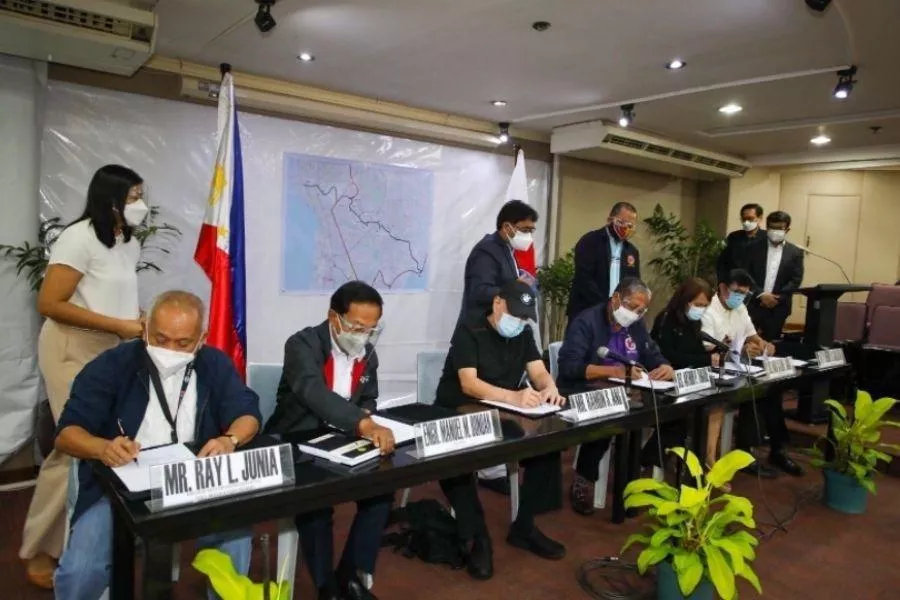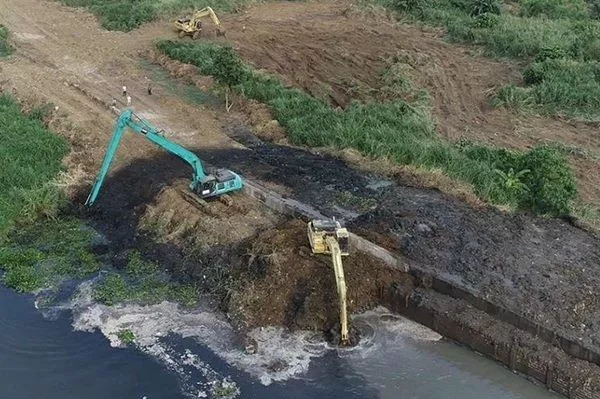Now that the Pasig River Expressway Project (PAREX) is made official through the approval of the government, San Miguel Corporation (SMC) is on the track to constructing one of the most significant infrastructures in Metro Manila.

The PAREX is now official
This will finally complete the company’s long vision of establishing north-south-east-west connectivity. The PAREX, which will run between the eastern and western parts of the region, will be connected to the Metro Manila Skyway Stage 3 (MMSS-3) which links the South Luzon Expressway (SLEX) and North Luzon Expressway (NLEX).
The PAREX does sound like one exciting project once it officially starts its operation. So with that being said, here are the things you need to know about the upcoming expressway.
I. Background
With a length of 19.37 km, the PAREX will be constructed with a six-lane elevated expressway. The upcoming expressway will run along the banks of the Pasig River once completed.
That said, SMC also rolled out the Pasig River cleanup operation with a budget of Php 2-billion, the largest in the country’s history. It partnered with concerned government agencies such as the Department of Environment and Natural Resources (DENR) and the Department of Public Works and Highways (DPWH) to complete the operation.

It will link the eastern and western cities of Metro Manila
What makes this expressway unique is that it is the first privately-funded road network in the country, meaning SMC funded the entire project from the start to finish. In addition, the road project is described as a hybrid highway due to the various road components will be constructed with. We will get more to this in a second.
Objective
As you might have guessed, the PAREX aims to establish a direct link between the western and eastern cities of Metro Manila. In turn, it is expected to decongest traffic in areas such as R-10, EDSA, and C-5. This should help alleviate the infamous traffic conditions in Metro Manila, especially during rush hours.

A major project from SMC
Another objective is to improve the efficiency of the country’s road transport system by providing safe, reliable, and environmentally friendly infrastructure. SMC plans to integrated a Bus Rapid Transit (BRT) system so that many Filipinos will benefit from the project including the commuting public.
II. Segments
- Segment 1: R-10 to MMSS-3 – Plaza Azul (5.740 km)
- MMSS-3 Segment: MMSS3 – Plaza Azul to MMSS-3 – San Juan River (2.70 km)
- Segment 2: MMSS-3 – San Juan River to C-5 (7.325 km)
- Segment 3: C-5 to South East Metro Manila Expressway (SEMME) (6.3 km)
Total length: 19.365 km.
III. Toll fees
The Toll Regulatory Board (TRB) hasn’t provided any proposed toll fees for the PAREX, but has declared it as a toll road last June 2020. Well, this is kind of early to say considering that the project is only at its beginning stage. However, we do know that it will come with an Autosweep RFID considering that the expressway is a project from SMC.
Upon completion, PAREX will join Autosweep expressways such as SLEX, Metro Manila Skyway System (Skyway), NAIA Expressway (NAIAX), Southern Tagalog Arterial Road (STAR Tollway), Muntinlupa-Cavite Expressway (MCX), and Tarlac-Pangasinan-La Union Expressway (TPLEX).
IV. Hybrid Highway
As said earlier, the PAREX is described as a hybrid highway due to various planned road components. The expressway project will be constructed with roads to allow other modes of transportation such as bicycles and pedestrians. This promotes a greener way of going around the city.

Pasig River is getting thoroughly innovated after all these years
Moreover, SMC said that the PAREX will help reduce vehicle pollution in the areas the road project traverses. How so? SMC President Ramon Ang noted that idling in traffic for hours can increase harmful emissions. With the PAREX alongside MMSS-3, travel time will be reduced which lowers vehicle pollution as well.
V. Project Status
After the PAREX gets the green light from the government, the company broke ground on September 24 together with representatives from concerned agencies such as the Department of Transportation (DOTr) and DPWH. Ang has also addressed backlash over the project as it is seen as bad for the public and the environment.

It won't take long before we can use the PAREX
The construction of the Pasig River Expressway project is expected to begin by 2022. And by 2023, the project should complete the company’s long-envisioned north-south-east-west connectivity.
Learn more about the latest public roads news on Philkotse.
Recent posts
- DPWH Riverlane project pasig river Aug 11, 2021
- Lemon Law Philippines: 10 most FAQs of Filipino car owners Sep 13, 2021
- Driver's License in the Philippines: All You Need to Know Nov 08, 2022












